Though the basic steps to taking care of hair are the same for everyone hair care practices will be different. They will depend on your hair’s characteristics (density, porosity, texture, etc) and hair care needs and some people will need to be more diligent than on others in this respect. When it comes to a conditioning treatment, I am a big supporter of it and in my book, anyone who wants healthy hair should do it. However, there are some people who need it the most.
For me, deep conditioning should be a regular practice in any hair regimen. I do it weekly on my wash day, some people do it more often (can I get a virtual fist bump! 😉 ) and it doesn’t have to be something that takes up a lot of your time, contrary to popular belief.
Catch Up! Get On the Deep Conditioning Shuttle.
If you’re not yet convinced of about the impact a hair conditioning treatment can have on your hair you can catch up on my latest posts and see the light girl (yes, the light! Come over to this side). You can start with:
- 5 Reasons Why Damaged Hair Is Inevitable And How You Can Fix It
- 5 Reasons Why Deep Conditioning Is Key To Healthy Natural Hair
Then, if you get convinced or are already convinced you can read the posts below to help you get the most out of your conditioning treatments:
- 5 Reasons Why You’re Deep Conditioning Your Curly Hair The Wrong Way
- 4 Ways You’re Wasting Your Deep Conditioner
You may also wanna take a good look at The Curly Guide To Deep Conditioning. It’s a 70+ page digital guide you can download that has all the Q’s to your A’s plus guidance to help you identify the different hair treatments, knowing which one your hair needs, protein sensitivity and more.
Alternatively, you can keep on reading and then catch up on all this great info, right?! 🙂
Why Hair Care Steps Are The Same, But Not Hair Care Practices
The basic steps to healthy moisturised hair will always be same and have always been the same for everyone and they are Cleansing, Conditioning and Moisturising/Styling. Let’s have just a quick look.
Cleansing
Cleansing allows you to remove dirt, product residue, pollution and sweat from your hair. It prepares your hair to receive hydration. Good hair cleansing is achieved by shampooing your hair – not co-washing, clay washing or whatever.
Sulphates are harsh?! Well, there’s a spectrum of them, from very mild to very effective (harsh) ones (read more here). What shampoo you use and how often you use it depends on the other products you use in your hair routine. Use a lot of oils and hair butter?! Well, then co-washing on a regular basis won’t clean your hair properly.
Make sure you have a good shampoo for regular use and a clarifying one for occasional use (not regular) to remove build and/or hard water minerals.
Conditioning
If you read the posts I hooked you up with at the beginning of this post you know conditioning is important to bring your hair back to being smooth, soft, more manageable, easy to detangle and style, with less frizz, restoring the protective lipid barrier of your hair… all good stuff I’m telling you. 😉
Though most people condition and then deep condition, you don’t need to do both. My best advice is to deep condition first, take advantage of the clean state situation your hair is in and infuse it with the deeply penetrating and nourishing ingredients of a deep conditioner. Then, if you wish you can use your regular conditioner. To know why you should use these two products this way read here.
Moisturising/Styling
Right, so now that your hair has been cleansed and received hydration (a.k.a. Water!) and is conditioned it is ready to be moisturised and styled. Please take note that moisturising and hydrating are not the same things even though we tend to use these words interchangeably.
Hydration refers to giving your hair an adequate level of water (which is why shampooing is important) while moisturising is about preventing that water loss. So, on this stage, you will use a product that has some sort of emollient (like oil, butter, fatty alcohols) and even humectant (water grabbing like glycerin or honey) and finish with styling your hair – wash and go, braids, you’re the boss here! Just don’t put your hair and scalp under too much tension to avoid thinning hair and lost edges.
Okay, now that we’re clear on the steps of the hair regimen being the same, let’s chat about why hair care practices within these steps are not the same.
Hair Care Practices Are Different
What do I mean by this? Well, we both know we need to shampoo our hair but how often and how we do/practice it may be completely different. You may only shampoo your hair once a week with no more cleansing, while I may shampoo once a week and do a soft mid-week cleanse with a co-wash because I exercise and my scalp gets itchy.
In another scenario, if I use products that are based in natural ingredients and pass on on the oils and butters while you do the opposite you will need to use a stronger shampoo and to clarify your hair more often than me to allow proper hair cleansing and hydration.
Additionally, I may also like to straighten my hair once a month or I may have high porosity hair and in both these cases, I would need to have a different approach to deep conditioning. I’d need to rely on a type of deep conditioner more often than you – one that has some sort of hydrolysed protein and gives my hair nutrition – to offset the damage that flat ironing/blow drying has on my hair or my hair’s inability to retain water and vulnerability to breakage.
As you can see, the hair care practices within a hair care step can vary greatly which brings me back to to the main point of this post – that deep conditioning is extremely important and should be done on a regular basis. (Did you forget about this?!)
However, some people, because of their hair care practices and/or hair needs, will need a conditioning treatment more than others because their hair has a higher risk of damage.
For instance, while someone who doesn’t use direct heat on their hair, doesn’t bleach or colour, doesn’t have breakage and their hair is in a healthy state can approach deep conditioning in a less consistent way than someone who presents the opposite ‘hair scenario’ and should make this session a compulsory and regular practice.
Curious to know who these people are or in what situations deep conditioning should be prioritised? Let’s have a look.
#1| High Porosity Hair
High porosity hair can be a natural characteristic of your hair or the result of damage inflicted on it. Either way, your hair is more vulnerable to damage because (1) its cuticle layers are opened, broken or chipped, (2) it has difficulties retaining water and (3) the cortex of the hair (what gives your hair strength and elasticity) is more readily exposed to external damage (heat styling tools, weather conditions, brushing, etc.).
#2| Chemically Treated Hair
If you’re transitioning to natural hair and stopped relaxing or texturising your hair, if you bleach, colour or have done any keratin treatments you have permanently altered the structure of your hair (Cuticle Layer, Cortex, Medulla).
By doing these chemical treatments you are rearranging the structure of your hair (altering the protein bonds). These hair treatments make the hair more porous and without proper hair care, it will become unable to retain water without additional help. Your hair will soon become dry (or drier) and brittle suffering from breakage and inability to retain hair length, not to mention your inability to achieve a successful hairstyle.
#3| Hair Subjected To Direct Heat Styling
Curly girls are different when it comes to their hairstyling preferences, and just because we let our naturally curly hair grow without being subjected to hair straightening chemicals it doesn’t mean we’ll never go for the straight hair look. What’s good about being natural is that we get so much diversity in our hairstyles and straight hair is just one of the many options.
However, if the use of heat styling tools (e.g. hair dryer, flat iron, curling wand and similar) is a regular practice in your hair care regimen than your hair is at risk serious damage. Even with the use of a heat protectant things can go wrong, especially if you’re using your tools incorrectly.
Frequent, high and direct use of heat on the hair alters its structure. Your hair can quickly become rough, dry, brittle, it starts to lose its elasticity (curl bounce), shine, split ends start to occur and breakage is inevitable.
#4| Water Activities (Salt/Chlorine)
Swimming or water activities as a hobby you love to do or as part of your job are no doubt a great thing for your health as you’re keeping yourself fit and a ‘healthy body, means a healthy mind’, right? However, your hair may not be as appreciative as your body.
Whether it’s salted or chlorinated water, both affect your hair in negative ways especially if it’s regularly exposed to them. When salt water dries it creates mineral crystals that dry the hair and chlorine water alters (“eats away”) the protein bonds of the hair.
Both need to be removed thoroughly from the hair however, regular exposure will still make the hair feel dry and brittle, sometimes having a bleached effect which culminates with breakage. If you’re in this group your hair needs extra TLC.
#5| Outdoor Activity
Ahh… the outdoors, nature, the sun… we all love it, right?! Well… some more than others. No camping girl here! I love trees, but the city is my place (not a fan of insects, bugs and uninvited animals 😐 ). The point, if being or working outside is your thing, out of love or necessity (job), your hair can also at risk.
If the majority of your activities are done outside your hair is exposed to all sorts of weather conditions – UV radiation, high or low temperatures, cold or frosty gusts of wind. They all affect your hair in different ways. Again, they can make your hair dry and brittle and cause breakage. Your hair needs protection from this environment.
#6| Indoor Environments
I know what you’re thinking, ‘Oh, c’mon Mónica, give me a break! Outdoor and Indoor?!’ I know, I know… but there are indeed some indoor environments you need to be careful of, but in this case, you do have some control.
For those who spend the majority of their time indoors in controlled environments (i.e. air-conditioned environments), temperatures normally different drastically from those outside and there is little humidity available in the hair, all things that can dry your hair and scalp faster leading to chronically dry hair.
All in all, if you find yourself in one or more of these situations your hair definitely needs a deep conditioning treatment more than someone who is not.
However, I don’t want you to think that ‘our fragile curly hair is in constant peril’ (read the sarcasm here). No! Our hair is only this fragile when the hair care practices, tools and products used/applied are not built into (or are not the appropriate ones in) a hair regimen meant to cater your hair needs.
Is deep conditioning what is going to protect your hair against all these? No. You can’t rely solely on your deep treatment. Hair care practices need to change and/or preventive measures need to be implemented other than deep conditioning.
When this is done, regular deep conditioning with its intense penetrating ingredient and long-time effects is able to rehabilitate damaged hair or maintain and improve its health when it’s relatively well. However, it’s important you know what you’re deep conditioning for as there are different types of treatments. In some situations, the hair is in desperate need of moisture while in others it needs more protein and you should never doo to much of any or neglect any.
Confused? I know it can be ’cause it took me a while to get it too, plus I get your questions all the time. That’s why I decided to put the best of my knowledge into a 70+ page guide to take the knot out of your brain. You won’t need to wait months or years to put all the puzzle pieces together! You can find it all in The Curly Guide To Deep Conditioning.
To summarise, I hope that after reading this post and, hopefully, all the others I made reference to about deep conditioning you realise how important your deep treatment is, why you should do it and start making it a regular practice in your curly hair routine. Not only to get your hair back to health but to also protect it against further environmental, chemical and mechanical aggression giving your hair a fighting chance if you’re one of the people who need it most.
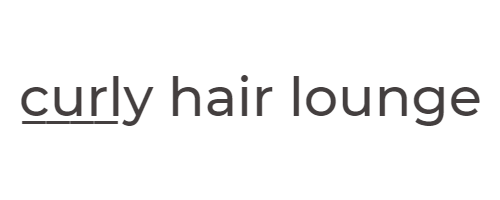
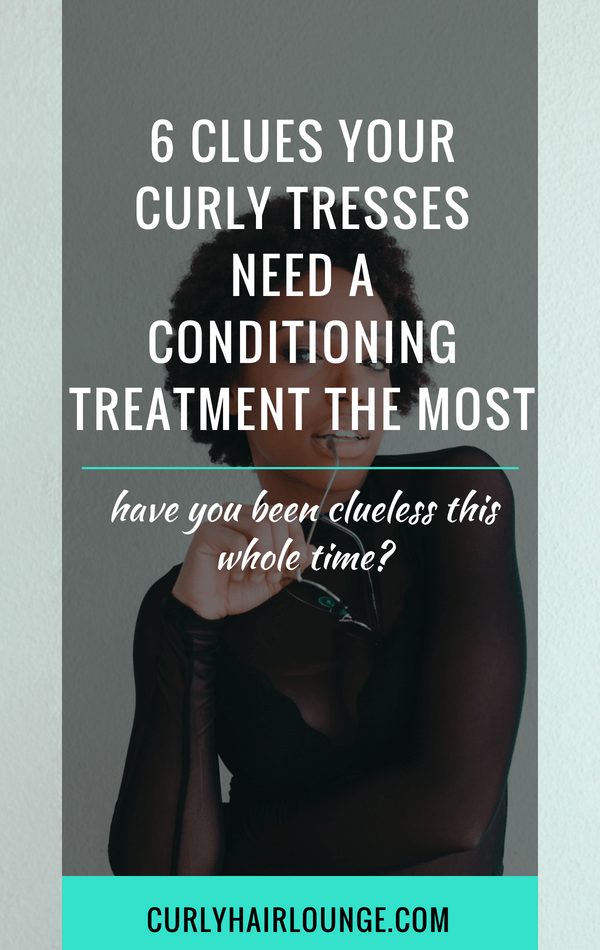

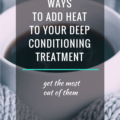
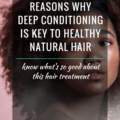
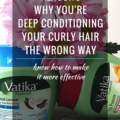

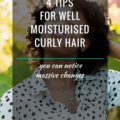
2 thoughts on “6 Clues Your Curly Tresses Need A Conditioning Treatment The Most”
If your moisturizing butter/cream have sealing oils in it, is if necessary to deal with an oil?
No. You don’t need to seal with an oil or butter, Elaysha. Depending on what style you’re doing you can finish with a gel or a foam.